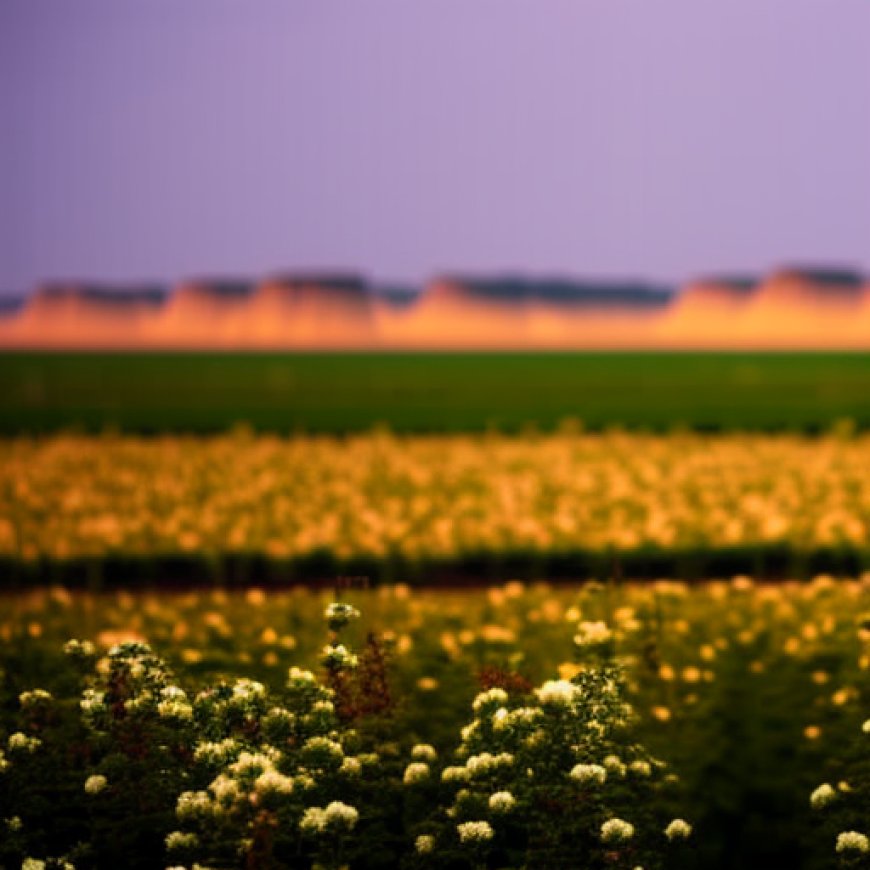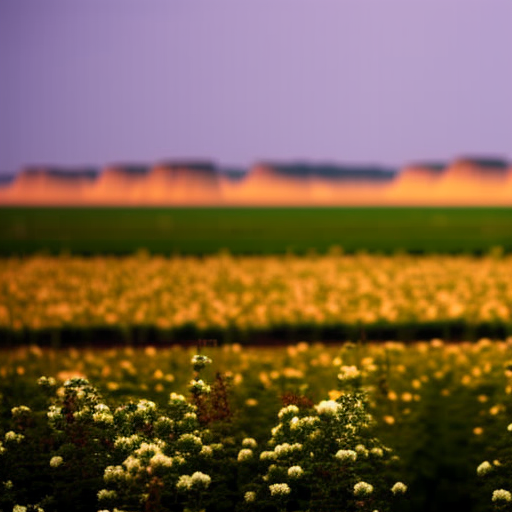Scientific Innovation Transforms Cangzhou’s Saline-Alkali Fields into Fertile Land
Scientific Innovation Transforms Cangzhou's Saline-Alkali Fields into Fertile Land Morningstar


Scientific Innovation Transforms Cangzhou’s Saline-Alkali Fields into Fertile Land
PR Newswire
CANGZHOU, China, April 16, 2024
The Cangzhou municipal government has successfully transformed a once-barren field under saline-alkali stress into fertile land through measures that prioritize the comprehensive use of saline-alkali land and leverage scientific and technological innovation. This transformation has been achieved by expanding the cultivation area of suitable crops and developing the intensive processing of farm products.
The project, known as the National Dryland Alkaline Wheat Agricultural Standardization Regional Service and Promotion Platform, has been approved by the China National Standardization Management Committee. It is the first project of its kind nationwide and covers the dryland alkaline winter wheat planting area in the low-lying plains around the Bohai Sea.
The unique natural conditions in Cangzhou, including dry and less rainy winters and springs, along with high levels of soil salinization and alkalization, have provided a foundation for the development of dryland alkaline wheat agriculture. While ordinary wheat struggles to grow in such an environment, dryland alkaline wheat thrives. The cultivated area of saline-alkali land in Cangzhou accounts for over 70 percent of the total saline-alkali land area in Hebei Province, indicating significant potential for comprehensive management and utilization.
Through the efforts of local agricultural technicians, the yield of dryland alkaline wheat in Cangzhou has been increasing year by year. In 2023, the grain planting area in Cangzhou City reached 13.546 million mu, with a total output of 4.67 million tons. This exceeded the provincial grain production tasks, with 1.547 million mu planted with dryland alkaline wheat, surpassing the target of 1.5 million mu. The once unproductive saline-alkali land has not only become fertile farmland but also a major granary in the Bohai Bay region.
The grains of dryland alkaline wheat in Cangzhou are of high quality, with full and translucent grains that are rich in calcium, potassium, iron, zinc, and other trace elements. The protein content ranges from 13 percent to 16 percent, exceeding the national standard of 12.2 percent.
Once completed, the project will establish core demonstration sites covering an area of over 1333 hectares. It will also drive the standardized planting area of dryland alkaline wheat in saline-alkali coastal areas around the Bohai Sea, including Hebei, Shandong, and Tianjin, to reach 33,300 hectares.
View original content to download multimedia
SOURCE Cangzhou Municipal Government
SDGs, Targets, and Indicators
-
SDG 2: Zero Hunger
- Target 2.4: By 2030, ensure sustainable food production systems and implement resilient agricultural practices that increase productivity and production, that help maintain ecosystems, that strengthen capacity for adaptation to climate change, extreme weather, drought, flooding, and other disasters, and that progressively improve land and soil quality.
- Indicator: Increase in the cultivation area of suitable crops and development of intensive processing of farm products.
-
SDG 15: Life on Land
- Target 15.3: By 2030, combat desertification, restore degraded land and soil, including land affected by desertification, drought, and floods, and strive to achieve a land degradation-neutral world.
- Indicator: Transformation of saline-alkali fields into fertile land through scientific innovation and comprehensive management.
Table: SDGs, Targets, and Indicators
| SDGs | Targets | Indicators |
|---|---|---|
| SDG 2: Zero Hunger | Target 2.4: By 2030, ensure sustainable food production systems and implement resilient agricultural practices that increase productivity and production, that help maintain ecosystems, that strengthen capacity for adaptation to climate change, extreme weather, drought, flooding, and other disasters, and that progressively improve land and soil quality. | Increase in the cultivation area of suitable crops and development of intensive processing of farm products. |
| SDG 15: Life on Land | Target 15.3: By 2030, combat desertification, restore degraded land and soil, including land affected by desertification, drought, and floods, and strive to achieve a land degradation-neutral world. | Transformation of saline-alkali fields into fertile land through scientific innovation and comprehensive management. |
Explanation:
1. The article discusses the transformation of saline-alkali fields into fertile land through scientific innovation and comprehensive management. This aligns with SDG 15: Life on Land, which aims to combat desertification and restore degraded land and soil. The specific target under this SDG is Target 15.3: By 2030, combat desertification, restore degraded land and soil, including land affected by desertification, drought, and floods, and strive to achieve a land degradation-neutral world. The indicator mentioned in the article is the transformation of saline-alkali fields into fertile land through scientific innovation and comprehensive management.
2. The article also highlights measures taken to prioritize the comprehensive use of saline-alkali land and expand the cultivation area of suitable crops. This relates to SDG 2: Zero Hunger, which aims to ensure sustainable food production systems. The specific target under this SDG is Target 2.4: By 2030, ensure sustainable food production systems and implement resilient agricultural practices that increase productivity and production, that help maintain ecosystems, that strengthen capacity for adaptation to climate change, extreme weather, drought, flooding, and other disasters, and that progressively improve land and soil quality. The indicator mentioned in the article is the increase in the cultivation area of suitable crops and the development of intensive processing of farm products.
Behold! This splendid article springs forth from the wellspring of knowledge, shaped by a wondrous proprietary AI technology that delved into a vast ocean of data, illuminating the path towards the Sustainable Development Goals. Remember that all rights are reserved by SDG Investors LLC, empowering us to champion progress together.
Source: morningstar.com

Join us, as fellow seekers of change, on a transformative journey at https://sdgtalks.ai/welcome, where you can become a member and actively contribute to shaping a brighter future.







